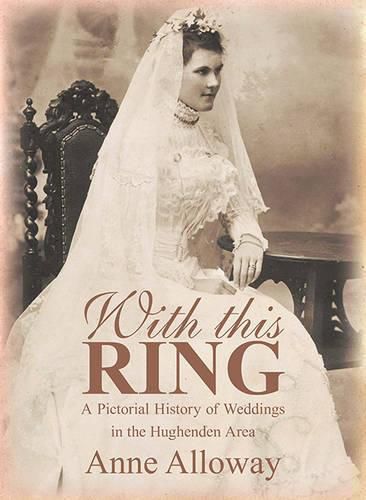Readings Newsletter
Become a Readings Member to make your shopping experience even easier.
Sign in or sign up for free!
You’re not far away from qualifying for FREE standard shipping within Australia
You’ve qualified for FREE standard shipping within Australia
The cart is loading…






The photographs show the fashions of the time, gradually changing until the Second World War, when in some cases brides were married in street clothes. The weddings had to be arranged around the time the groom could obtain leave, and the wedding party could acquire enough petrol coupons to travel. Mary Sladden remembers having to save up her food coupons and swap them for clothing coupons so that she could buy her dress and shoes. Colleen Murdoch’s sister Eileen was an excellent sewer, so she made most of the wedding dresses and head gear for her seven sisters. Likewise, Molly Horton sewed for all her daughters and made their dresses for the big day. Most of the brides chose to be married in their local church. Some of them travelled to Townsville. In the early part of the 20th century, many of the receptions were held at the home of either the bride or groom, or relations offered their house. Some of the weddings were held at their station homesteads. There were quite a few double weddings, which would have kept expenses down. Some of the brides wore a family heirloom. The Lethbridge girls wore a beautiful bridal veil made of Brussels lace that had been sent out from England for the wedding of Ella Minter to Robert Lethbridge in 1863. The Greer girls wore a brooch of pearls and rubies that had been handed down several generations.
$9.00 standard shipping within Australia
FREE standard shipping within Australia for orders over $100.00
Express & International shipping calculated at checkout
The photographs show the fashions of the time, gradually changing until the Second World War, when in some cases brides were married in street clothes. The weddings had to be arranged around the time the groom could obtain leave, and the wedding party could acquire enough petrol coupons to travel. Mary Sladden remembers having to save up her food coupons and swap them for clothing coupons so that she could buy her dress and shoes. Colleen Murdoch’s sister Eileen was an excellent sewer, so she made most of the wedding dresses and head gear for her seven sisters. Likewise, Molly Horton sewed for all her daughters and made their dresses for the big day. Most of the brides chose to be married in their local church. Some of them travelled to Townsville. In the early part of the 20th century, many of the receptions were held at the home of either the bride or groom, or relations offered their house. Some of the weddings were held at their station homesteads. There were quite a few double weddings, which would have kept expenses down. Some of the brides wore a family heirloom. The Lethbridge girls wore a beautiful bridal veil made of Brussels lace that had been sent out from England for the wedding of Ella Minter to Robert Lethbridge in 1863. The Greer girls wore a brooch of pearls and rubies that had been handed down several generations.